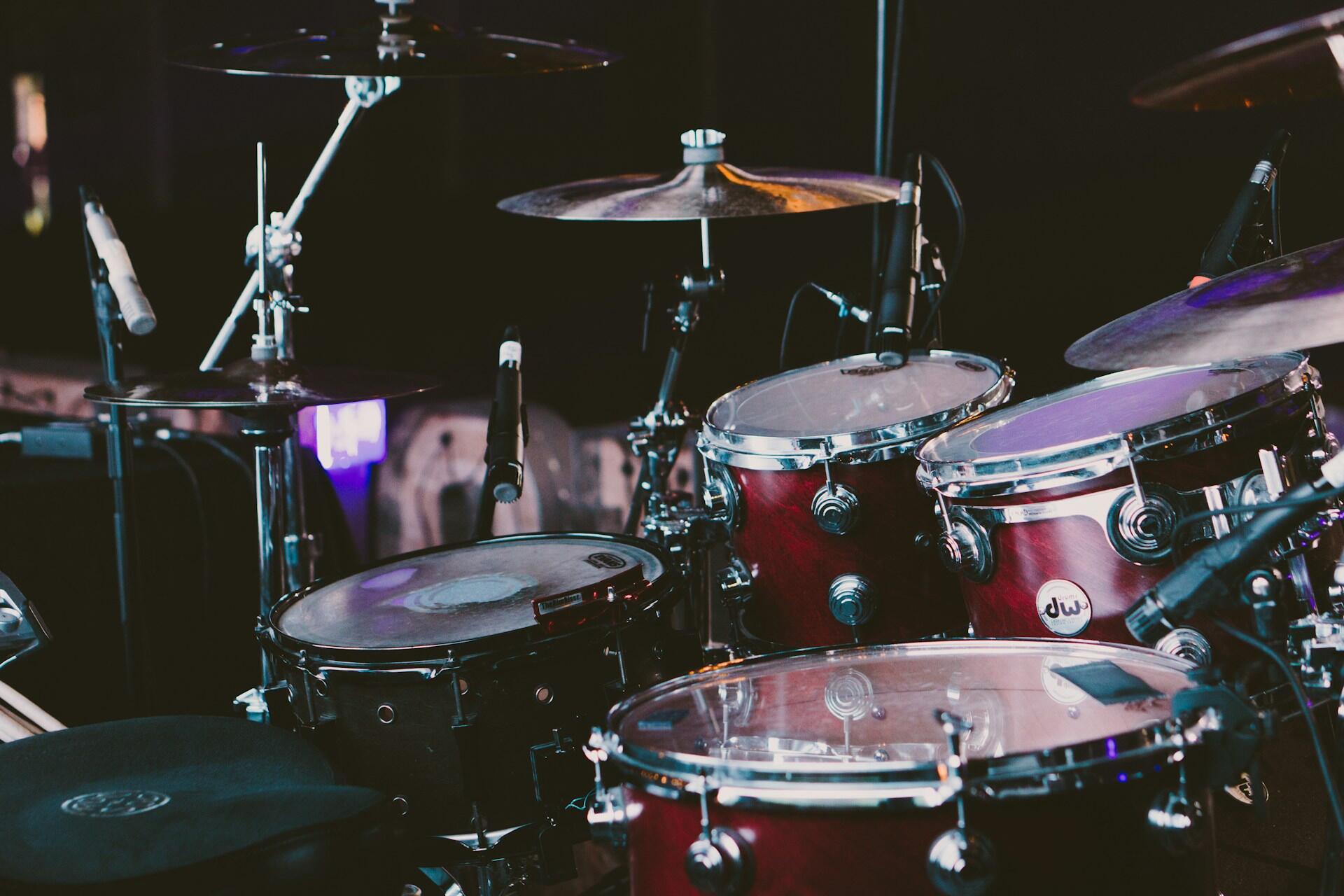Percussion instruments are often the backbone of every musical tradition. However, not every percussion instrument is a drum, and if you're wondering why that is, look no further, as we're about to clear everything up. From ancient ceremonial rhythms to modern drum kits, let's explore drums and percussion from around the world, covering everything from ancient instruments used for healing to the modern drum kits used by the world's most popular musicians.
| Drum | Average Price (NZD) | Typical Music / Use |
|---|---|---|
| Bakisimba | $250–$500 | Ugandan rituals, dances, social gatherings |
| Bass drum | $600–$1200 | Marching bands, rock/pop kits, orchestral bass |
| Bangu | $300–$500 | Chinese Beijing opera percussion |
| Bodhrán | $250–$400 | Celtic folk, folk-fusion percussion |
| Bongos | $300–$500 | Latin rhythms, jazz, Afro-Cuban music |
| Cajón | $200–$300 | Latin American music, acoustic sets, unplugged bands |
| Dagu | $400–$700 | Large Chinese orchestral drum |
| Darbuka (Doumbek) | $400–$800 | Middle Eastern and North African folk & dance rhythms |
| Djembe | $300–$450 | West African ensemble, drum circles, world music fusion |
| Eastern Polynesian upright drums | $400–$800 | Polynesian religious & communal rhythms |
| Empuunya | $250–$500 | Ugandan rituals, dances, social gatherings |
| Engalabi | $250–$500 | Ugandan rituals, dances, social gatherings |
| Hi-hats / Cymbals / Crash / Ride | $1500–$3000 (full kit) | Rock, pop, jazz, modern band kits |
| Jiegu | $300–$500 | Traditional Chinese hourglass drum |
| Kick drum | $1500–$3000 (full kit) | Rock, pop, jazz, modern band kits |
| Madal | $200–$350 | Nepalese folk music, hand-drum accompaniment |
| Marimba | $1000–$2500 | African and orchestral percussion ensemble music |
| Mbira | $100–$300 | African traditional, folk and world music |
| Mridangam | $600–$1000 | South Indian (Carnatic) classical percussion |
| Nankasa | $250–$500 | Ugandan rituals, dances, social gatherings |
| Ngoma (set) | $250–$500 each | Ugandan ceremonial drumming, social cohesion |
| New Guinea hand drums | $200–$400 | Pacific island tribal music |
| Pakhawaj | $700–$1200 | North Indian classical accompaniment |
| Slit drum (Log drum) | $150–$300 | Sub-Saharan tribal communication, ensemble rhythm |
| Snare drum | $500–$900 | Western orchestra, marching bands, modern music |
| Tabla (pair) | $250–$500 | Indian classical music, devotional & fusion styles |
| Talking drum | $250–$600 | African message-drum, traditional speech-mimic in music |
| Timpani (kettle drum) | $1500–$3000 | Orchestra, symphonic percussion |
| Timbale | $400–$800 | Cuban and Latin percussion, salsa, jazz fusion |
| Tom-toms | $1500–$3000 (full kit) | Rock, pop, jazz, modern band kits |
| Tumbaknaer | $250–$400 | Indian devotional and religious drumming |
| Udu | $200–$400 | Nigerian ceremonial drum, ritual music |

Understanding Percussion and the Many Types of Drums
No matter where in the world they originate, any musical instrument that gets beaten is considered a percussion instrument, but not every percussion instrument is a drum. To put that in perspective: the Latin word percussio means to beat or to strike – in a musical sense, not with an implication of violence. That Latin word is the root of the term percussion, and it covers anything that is struck to make a sound. Some musical instruments, such as the piano and the dulcimer, use hammers to strike the strings, which produce sound. Yet they are not considered percussion.
In fact, the piano defies standard classification: most accurately, it should be regarded as a beaten-string instrument! Other instruments in the percussion section of any orchestra or band, such as chimes and maracas, are agitated rather than struck by the player. However, one can beat a single maraca into one’s palm. Rain sticks do not get beaten at all; the percussionist inverts the stick to generate their sound! In compiling this list of drums, your Superprof considered the overwhelming variety of percussive instruments from around the world and puzzled over how best to present them to you.
- by their official Hornbostel-Sachs designation?
- those classifications include idiophones, membranophones, and electrophones
- by their basic classification: acoustic, electric, and world?
- by their region of origin: Asia, Africa, Latin America and Europe among them?
- by their function: orchestra, band, marching, military...?
- by their configuration/size: standard, fusion, electronic, two-headed, single-headed?
- By their shape: cylindrical, goblet, hourglass, bowl, box?
- By how they’re played – by hand, with a mallet, with sticks, or by striking them against something?
The sound of a drum depends on its materials, such as animal hide, synthetic heads, or metal shells and on how tightly the surface is stretched. Even temperature and humidity affect tone and resonance. This simple science explains why traditional drummers often heat or cool their instruments before playing.
And should we include cymbals in our assessment? They are, after all, essential to a drum kit and make a welcome addition to any orchestra. Besides, they are some of the oldest musical instruments in the world! One thing we can say for sure: you don’t need us to break down a standard drum kit – the kick drum, the tom-toms, the snare drum... Let’s visit the four corners of the world to find all of the traditional, ceremonial and improvisational drums we can!
Exploring the Traditional Drums of Africa
Despite this being a vast continent whose music is characterised by a strong rhythmic interest, many Sub-Saharan languages lack a word for rhythm or even for music. Nevertheless, musicologist Arthur Morris Jones, who had travelled extensively throughout Africa from his home base in Zambia, found music across the continent so similar that he considered even regional music styles a part of a bigger system found throughout Africa. The underpinning elements of African drumming consist of syncopation and cross-beats, or polyrhythms, played on such diverse instruments as:
- the udu – a ceremonial drum played by women in Nigeria
- the slit drum, also called log drum
- the djembe: goblet-shaped, it is the most well-known of African drums
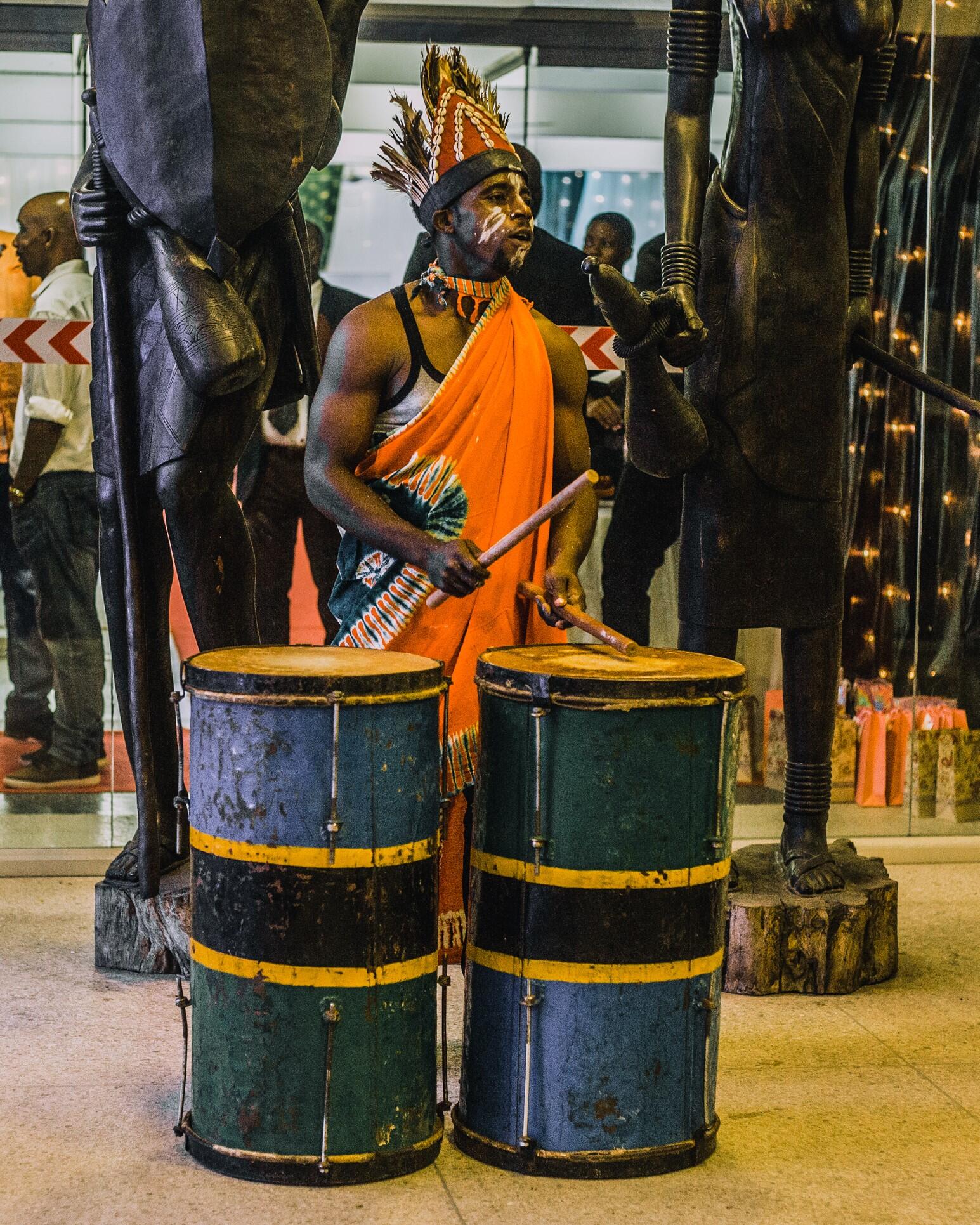
In Uganda, the ngoma is generally referred to as a ceremonial drum. Traditionally, they are played during rituals and as a symbol of authority. They are also used to communicate over distances. The Bantu ethnic group, the Baganda, have such a special connection to this drum that they affectionately refer to themselves as the children of the ngoma. Beware that the term ‘ngoma’ can be misleading, as it is the Swahili word for ‘drum’ in general. Spoken in that sense, that word does not define a single drum, rather a set of up to seven drums, of different sizes and varieties, all linked and played together.
The most common drums in a ngoma (set) include a bakisimba, which, when beaten, produces a deep bass sound. One might compare it to a Western drum set’s kick drum.
The empuunya has a slightly higher pitch and is smaller than the bakisimba; nevertheless, its sound is also in the bass range. The nankasa is played with sticks rather than beaten with the hands, as with other drums, and it produces a high-pitched sound. You might think of this drum as the snare’s counterpart – minus the snares, of course. The drum most resembling the traditional, ceremonial ngoma is called engalabi. It is taller and narrower than the other drums in the set. Furthermore, unlike the different drums, it has only one head, made of lizard skin and fastened with wooden pegs. All of the other drum heads are made of cowhide on top and bottom. These skins are laced together by means of an intricate weave.
beats per minute, with most falling between 100 and 140 beats per minute.
The engalabi has the highest pitch of any drum in the set. As you might have figured, it is a special honour to play this drum! Other African percussion instruments include the marimba and the mbira, both of which must be regularly tuned. Needless to say, drumming is a vital part of Bantu culture. Drum music, often accompanied by ritual dances, is used to reinforce social cohesion, aid in healing and help reduce stress and tension.
African tribes are not the only proponents of drumming for stress management and healing. According to the Resiliency Project, drumming has a therapeutic effect on our physical, mental, emotional and psychological well-being. It has been shown to help lower blood pressure as well as to boost immunity and manage chronic pain. They should know! This non-profit foundation was established by the Thunder God himself, Rick Allen.
If you are any music aficionado, you surely know that this drummer for Def Leppard lost his left arm in a car accident. Rather than terminate his tenure, his bandmates aided his recovery by allowing him time to adapt to using an intricate pedal system so that his left foot plays the drums and cymbals his missing left arm would usually strike.
Across history, women have played vital roles in drumming traditions, though their contributions were often overlooked. From the female udu players of Nigeria to Polynesian priestesses and today’s global percussionists, women have shaped rhythm’s cultural power. Modern festivals and ensembles increasingly celebrate this legacy.
Back to African drums, now... Of particular note in the African drum lineup is the talking drum: a two-headed, hourglass-shaped instrument with strings joining the top and bottom heads. When played correctly, the percussionist would sit the drum under his arm and squeeze the strings while beating the head, changing the tone and pitch to mimic human speech. This drum type was generally used for communication more so than for making music, at least as we understand music-making.
Across much of Africa, drumming isn’t just music; it’s communication. Many traditional drums were used to send messages, mark rituals, or call communities together long before telecommunication existed. The rhythms themselves carry meaning, making each beat a form of spoken language.
Naturally, each region, language, country, and tribe identifies its drums by names unique to its language, and one might find similar drums on one side of the continent as on the other. The djembe mentioned above is a prime example of such. Furthermore, considering that Africa is the cradle of humankind, it is both reasonable and logical to postulate that, as humans migrated throughout the world, they took their drums with them. That is why we see similar drums in Asia, South America and even in the Caribbean, though how much you can expect to pay for your drum set will vary by geographic location.

Famous Drums and Percussion Instruments from Asia
Now we go from individual tribes in Africa to civilisation in China, where drums came into their own. Did you know that the art of drumming is more than 7,000 years old?

During the latter part of the Stone Age, people living in China were looking for new ways to use alligator skins. They stretched such a membrane over a hollow, cylindrical device and, presto! The Chinese drum was born.
From China, those instruments travelled all over Asia: to Japan, the Philippines, India and the Middle East. They also made their way into Australia and southern Europe; that will be our next stop!
Although gongs and cymbals are far more prominent in Asian percussion, there is nevertheless a fine selection of drums found in China: from the small bangu used in Beijing opera to the dagu, a large, wooden drum played with sticks.
The Chinese even have their own hourglass-shaped drum, called the jiegu!
years ago!
Drums in India
The Indian culture, also very prolific in its drumming – both for religious and secular reasons- boasts a long list of membranophones, too. The tumbaknaer is a goblet-shaped drum played while reciting devotionals, while the tabla consists of a pair of barrel-shaped, single-headed drums, with one a bit bigger than the other. They are played not with drumsticks but with fingers and the palms of the hands. In fact, the tabla is a fascinating pair of drums; let's talk more about them!
The tabla represents one of the most sophisticated drumming traditions in the world. Players often describe its rhythms as a form of dialogue, where each hand “speaks” to the other through intricate patterns called bols. Mastering tabla is as much about memory and precision as it is about feeling and expression.
The mridangam, the oldest of all percussion instruments, is a double-headed drum made from a single piece of wood. Generally barrel-shaped, it does bulge on one side. Played horizontally, its right ‘face’ is smaller than its left face – what we would call the drum head. The two faces are secured to the drum by an intricate system of braids and leather straps. Before playing, the artist sometimes applies a mixture of flour and water to the left face to achieve a lower tone. This coating is naturally wiped off after the session!
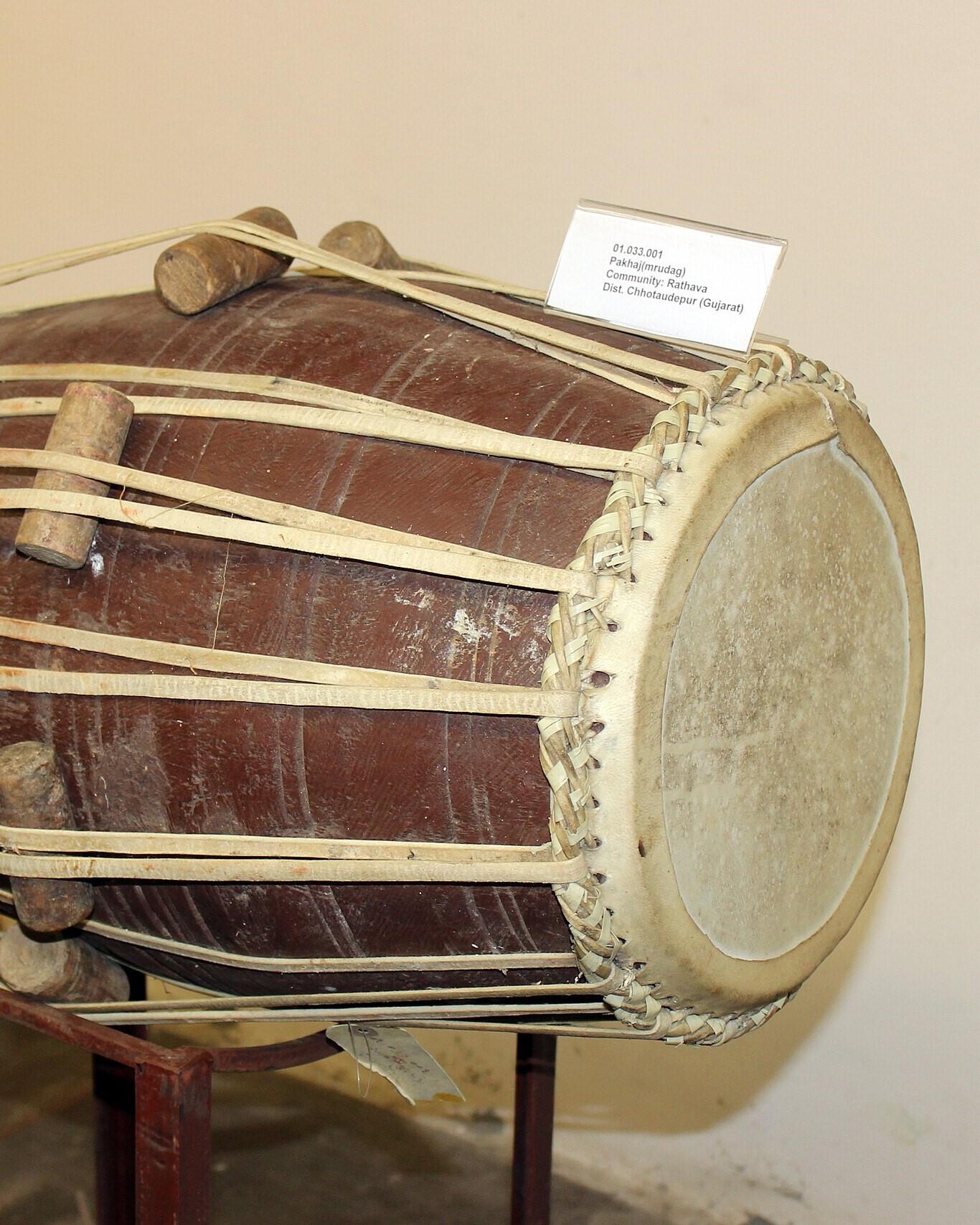
The Pakhawaj is the Northern Indian counterpart to the mrindangam.
It too is barrel-shaped and has two heads, but there is one critical difference between the two: this drum has tuning blocks between the straps and the shell.
The drummer would slide these blocks up or down to tune the drum.
This type of drum was mainly used to accompany dhammar and druphad singers, but it is now rarely used.
The tabla, India’s most widely-played drum, is said to have originated from the mridangam and the pakhawaj. Tablas are actually a pair of drums. Rather interesting that this drum has a male and female side. The drum designated male is on the left side and renders bass tones. The female drum yields a treble tone. The Dayan, as the female drum is called, consists of a slim, wooden shell. The male drum shell is rounded and made of metal. Both drums have heads made of skin, fastened to leather hoops, which, in turn, are secured to the drum body with leather straps.
Additionally, the female drum has blocks of wood trapped between the leather braces and the drum body. One tunes the drum by adjusting the positions of these wooden blocks... just as with the pakhawaj! One more unique feature of the tabla drums: they usually rest on a small pad, one for each drum. These round cushions have the dual effect of insulating the instruments so their vibrations don't transmit to the ground and keeping them in place.
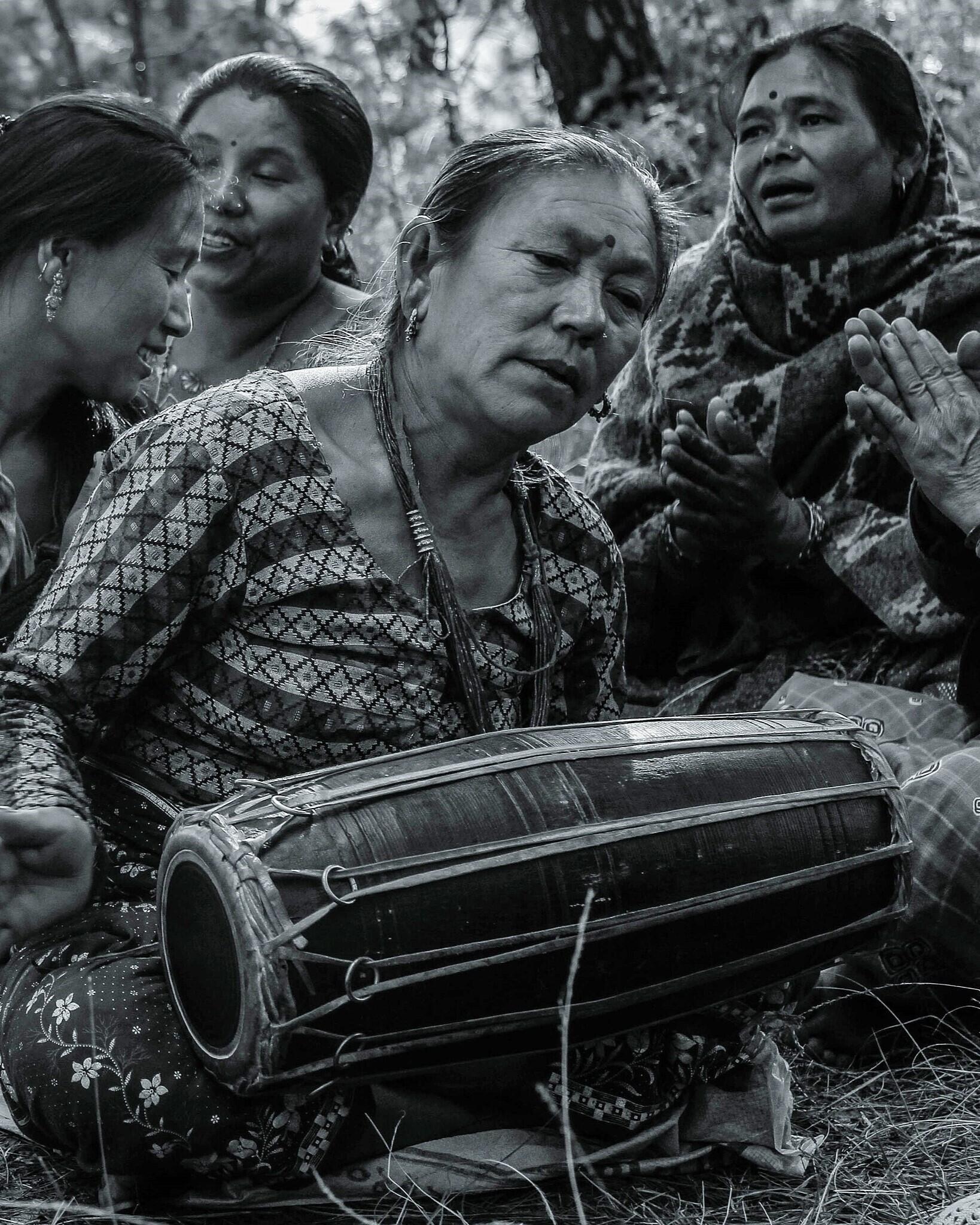
The Nepalese Madal is a hand drum that resembles the small, cylindrical drum that women play while dancing in China! The madal is Nepal's national instrument and the backbone of that country’s folk music repertoire. It, too, is barrel-shaped, with one end wider than the other, and the narrower end is designated female.
The heads are made of a double layer of goatskin. The centre of each head is then coated with a mixture of flour, iron filings and egg, which is seared on, giving the drum a distinctly... metallic tone; almost like a bell.
A similar coating features on the head of the Indian female Dayan drum; it is made of flour, water and iron filings – no eggs involved. The Madal drum is played sitting down; an extra leather strap is incorporated into its design to secure the instrument to the player’s knees.
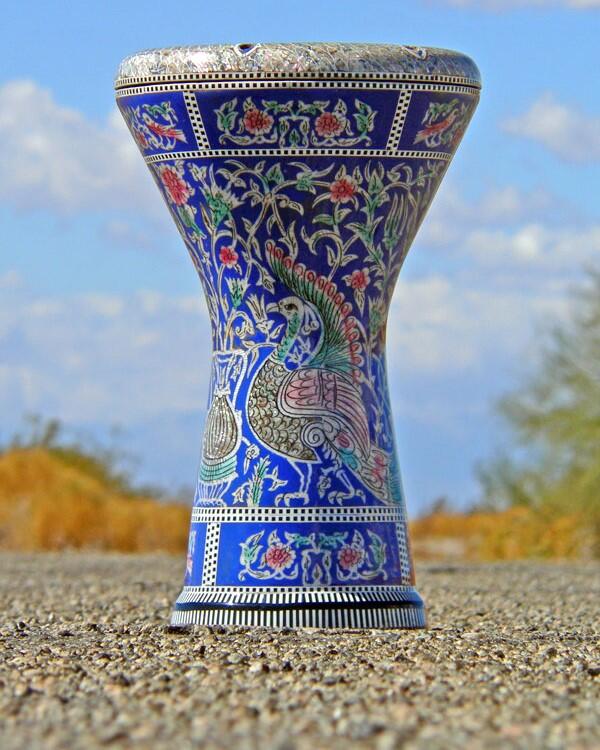
Many cultures and societies use goblet drums in their rituals; this is a prime indicator that drums migrated out of Africa alongside humankind!
The darbuka is a prime example of such. This goblet-shaped drum was found in the Middle East, as well as Northern Africa, and in Eastern Europe.
It is known by other names in different regions, among them dumbeg, tarabaki, toumperliki. And, of course, the most famous goblet drum of all, the djembe!
The musical heritage and culture of Asia are so rich and varied; we hope you'll have the chance to play at least some of these shining examples of drums from that region before moving on to discover your own drumming style and the best drum kits for it.
Unique Drums and Rhythmic Traditions Across Oceania
From Australia to the disparate islands of Kiribati, throughout the Pacific, drumming takes pride of place as a cultural more. Drums are an integral part of religious rites and popular entertainment.
In New Guinea, the surrounding islands, and throughout eastern Micronesia, drums tend to be hand-held instruments. They could be shaped like an hourglass—like the Chinese jiegu —or tubular. A unique feature of drums in some parts of New Guinea is their handle. Intricately carved to resemble mythical figures or animals, they are an integral part of the drum’s appearance and function but do not contribute to its sound. These drums are not played with both hands. Instead, the drummer holds his instrument by this carved handle with one hand while striking it with the other. In this region and in almost every society, drumming is the purview of males.
use drums in ritual or communication.
In those that don't emphasise drumming as a masculine pursuit, women are trained to be competent (and competitive!) drummers. In bygone eras, there is evidence that drumming was exclusively a feminine activity. In eastern Polynesia, a region that includes our Pitcairn Islands, drums are not hand-held but are pretty tall, upright instruments. They are placed on the ground rather than on any stand, and, depending on the height of the drum, the drummer may sit or stand to play it. Unlike in other societies, drums in this area were mainly used for religious purposes, and, unlike the handled drums of New Guinea, which belong to individuals and are passed down through families, these drums belong to the tribe.
One more interesting characteristic of drums throughout most of Oceana: they are seldom beaten with anything but the players’ hands; any implements, such as sticks or mallets, are rarely used.
Drums and Musical Traditions of the Māori and Aboriginal Peoples
You might think that, because drums are an integral part of so many cultures in Oceania, the Maori of New Zealand and the indigenous people of Australia would also make drums a vital part of their cultures and communication systems. On the contrary, the Maori did not adopt drumming as it is commonly known (or the use of stringed instruments) until the arrival of European explorers, when they gave up their instruments wholesale in favour of the imports.
However, they did have instruments that are struck, primarily gongs, used to signal war or other official decrees. One such instrument, the tumutumu, is made of stone, bone, or wood and is struck with a striker. Likewise, in Australia, the three main musical instruments are the didjeridu (or didgeridoo), the bullroarer and the gumleaf, all of which are wind instruments.
Drumming has a vibrant presence across New Zealand, blending Māori, Pacific, and global influences. From traditional kapa haka performances to taiko groups and contemporary percussion ensembles, rhythm plays a central role in community and cultural expression. Many local schools now offer world drumming workshops, reflecting how global percussion has become part of Kiwi culture.
Evolution of Drumming and Drum Kits in Europe
Now we start finding drum names that Western music fans will recognise! The snare drum was invented in the 14th century. We see concrete evidence of drumsticks, as they are shaped today, around that same time. The timpani, a type of kettle drum, came along shortly after the snare but did not gain popularity until about 200 years later.

The bass drum might have overshadowed the timpani because it was created around the same time.
Perhaps because it was more portable and less likely than the tom tom to drop tune, the bass drum was preferred for use in military bands.
About 400 years after the establishment of the bass drum, the bongos made their appearance on the European music stage.
By the 1800s, more explorers were venturing to Cuba and Africa, bringing those drums into Europe’s music scene.
A few decades after that, in the early 1900s, drummers could purchase entire drum kits: kick drum and snare, along with their toms and, of course, the cymbals.
In 1976, the German Karl Bartos, drummer for Kraftwerk, pioneered electronic drums. The timeline of drumming in Europe leads us to where drumming and drum sets are today!
new drum sets sold globally each year.
We may add that Ringo Starr is responsible for the essential drum kit we’re so familiar with these days and probably what you'd look for when buying your first drum set: a kick drum, one hanging tom, one floor tom and a snare drum; complemented by hi-hats, a crash cymbal and a ride cymbal! And how could we end this section on European drumming without mentioning the bodhran, an open-ended frame drum from Ireland?
Today’s drum sets combine centuries of innovation from around the world. From African polyrhythms and European marching snares to Latin congas and Asian cymbals, every modern kit reflects global influence. This blend of cultures is why drumming today feels both ancient and contemporary at once.
Latin American and Caribbean Drums
No drum review would be complete without the exotic sounds from Latin America! The Conga is a single-headed drum native to Cuba, but it is found wherever Latin rhythms are played. It is usually paired with a smaller drum tuned to a different pitch. Beaten by hand, it has a surprisingly wide range of sounds, depending on where and how it is struck.

The timbale is similar to the conga, played on raised stands. Both of these drums are tunable.
The box drum, or cajon, originated in Peru, created by West African slaves held there more than 300 years ago. They could not find any suitable materials to make their drums, so they fashioned them from what they had at hand.
This drum is remarkable in that... it is a box. There are no drum heads; one simply beats the front face or sides – generally made of plywood, to obtain different tones.
You may find cajon players in a jazz ensemble or tapping out a hot rumba beat! The cajón is unique in that it serves as its own throne: the player sits atop the box, leans back at a slight angle, and strikes the box’s face. Traditionally, the cajon player would use his hands; these days, a broader range of sound is achieved by beating it with sticks or mallets, or combed with brushes, as you would a jazz snare. Another interesting fact about this hand percussion marvel is its association with Ireland’s bodhran: in a pinch, this box drum fits the bill nicely!
Drumming continues to thrive today as one of the most accessible and unifying forms of music in the modern world. People gather in drum circles to relieve stress, connect with others, and find balance through rhythm. Drumming is taught in schools and community centres to encourage teamwork, focus, and creativity. Percussion is as educational as it is expressive and powerful.
Drumming workshops can bring people together across cultures and generations, and even with modern electronic kits and digital sound pads, it's still powerfully human, like a heartbeat. Whether you're playing drums or percussion because you want to learn a new skill, be creative, or socialise with others, it's powerful stuff. Thus, we’ve come full circle: from the djembe drum through the standard drum set that you might already own, with a nod to talking drums and paying respects to cymbals. These drums' history could be no more diverse, fascinating and colourful, could it? Neither could drumming lessons be! Instead of searching online for drum lessons near me, let Superprof take you further into your drum education. Don't you need a complete guide to drum kit maintenance?

